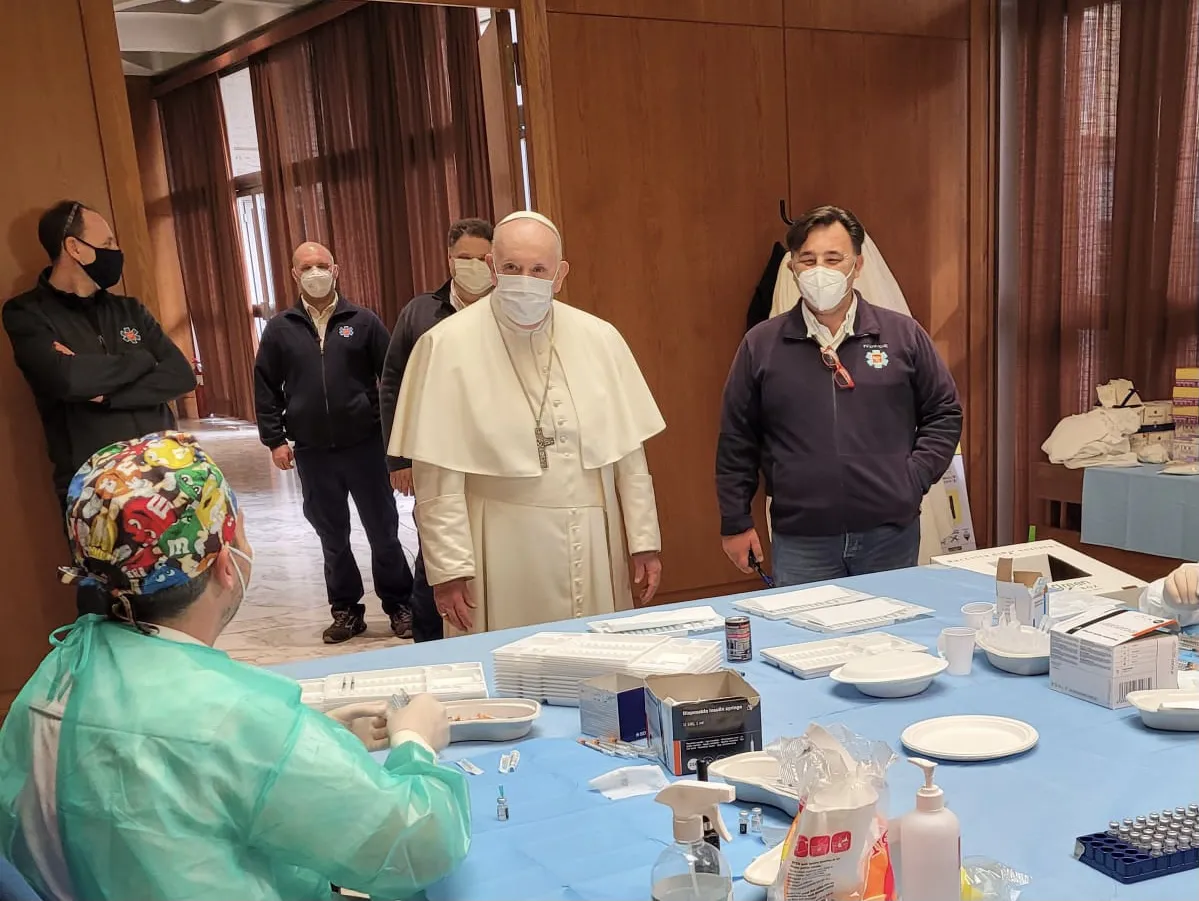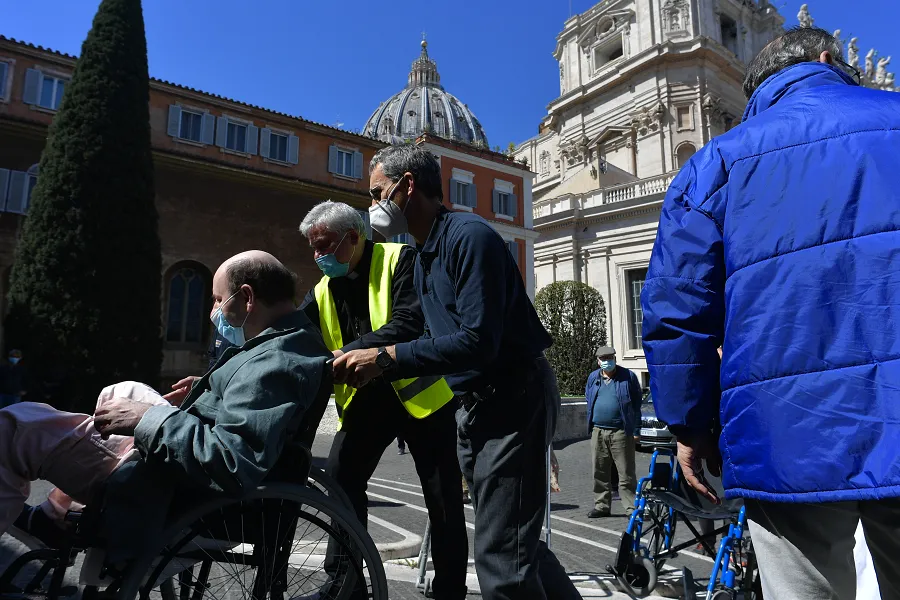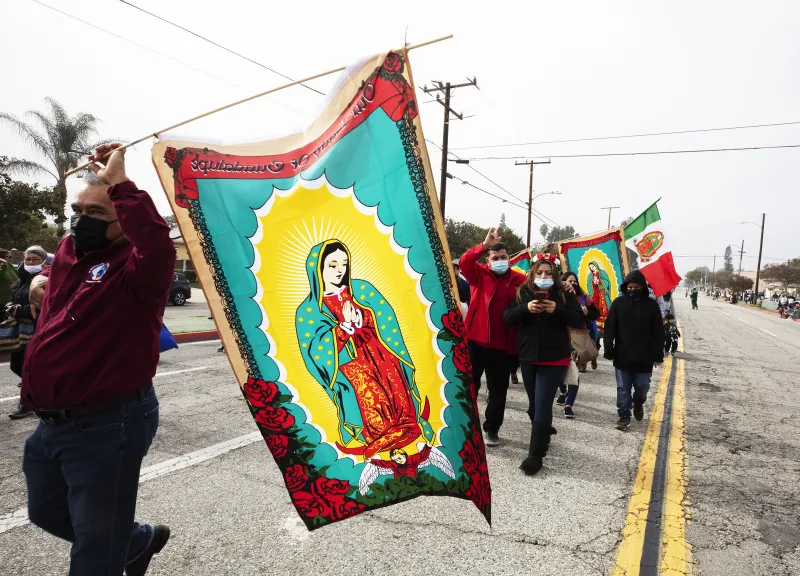
Vatican City, Apr 2, 2021 / 04:00 am (CNA).- Pope Francis on the morning of Good Friday visited the auditorium where the Vatican is vaccinating 1,200 people in need this week.
The Holy See Press Office said the pope went to the Pope Paul VI Hall shortly before 10:00 a.m. April 2 to greet the people waiting to receive their first dose of the vaccine against COVID-19.
Francis also spoke to the doctors and nurses who have volunteered their time to administer the vaccine.
 The Office of Papal Charities is offering doses of the Pfizer-BioNTech vaccine, purchased by the Holy See, to around 1,200 of “the poorest and most marginalized people” during Holy Week.
The Office of Papal Charities is offering doses of the Pfizer-BioNTech vaccine, purchased by the Holy See, to around 1,200 of “the poorest and most marginalized people” during Holy Week.
The press office said as of April 2, around 800 people have received the first dose.
Among those were a group of over 100 residents of a homeless shelter run by the Missionaries of Charity, and residents of other shelters in the city.
 Volunteers from the Community of Sant’Egidio, Caritas of Rome, and other Catholic charitable associations have accompanied those receiving the vaccine, who were also greeted by the papal almoner, Cardinal Konrad Krajewski.
Volunteers from the Community of Sant’Egidio, Caritas of Rome, and other Catholic charitable associations have accompanied those receiving the vaccine, who were also greeted by the papal almoner, Cardinal Konrad Krajewski.
Krajewski himself recovered from COVID-19 after being hospitalized for 10 days in December.
The almoner has set up a webpage where people can sponsor the vaccination of a person in need through an online donation to the Office of Papal Charities.
 The Pope Paul VI Hall was where Pope Francis and Vatican employees were vaccinated beginning earlier this year.
The Pope Paul VI Hall was where Pope Francis and Vatican employees were vaccinated beginning earlier this year.
Providing vaccinations for Rome’s poor and homeless is the Vatican’s latest effort to respond to Pope Francis’ appeals to ensure equitable distribution of the vaccine against COVID-19 during the pandemic.
Photos of Pope Francis credit Holy See Press Office. Photo of Cardinal Konrad Krajewski credit Vatican Media.
If you value the news and views Catholic World Report provides, please consider donating to support our efforts. Your contribution will help us continue to make CWR available to all readers worldwide for free, without a subscription. Thank you for your generosity!
Click here for more information on donating to CWR. Click here to sign up for our newsletter.




Leave a Reply